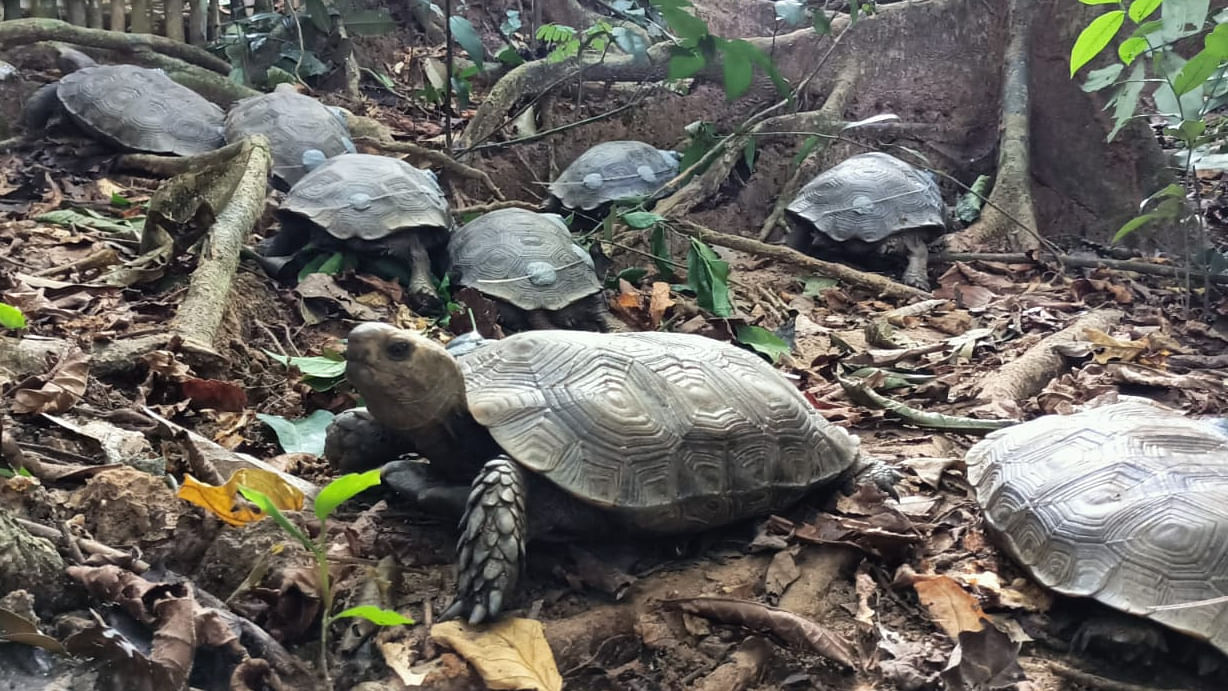
In a first such conservation exercise in India, 10 captive-bred Asian giant tortoises, the largest tortoise in mainland Asia, were released into Intanki National Park, a protected area in Nagaland on Monday.
The first monitored rewilding of the critically endangered tortoise in India comes after over five years of conservation breeding efforts at Nagaland Zoological Park in Dimapur by Nagaland forest department and two NGOs, Turtle Survival Alliance and Wildlife Conservation Society of India.
This is seen as significant, given the fact that the Asian giant tortoise is facing the threat of extinction due to overexploitation and unsustainable use for consumption. It has been tagged as "critically endangered" in the Red List of threatened species of the International Union for Conservation of Nature (IUCN).
Shailendra Singh of TSA said ten captive-bred Asian giant tortoises were similarly released in the Matamuhuri Valley in the Chattogram Hill Tracts of neighbouring Bangladesh by the TSA and Creative Conservation Alliance in December last year.
"The two release events by the partner organizations in India and Bangladesh, will produce the necessary scientific information for developing the long-term monitoring and eventual release strategy for species supplementation throughout their historic range in South and Southeast Asia," Singh, the principal investigator of the Asian Giant Tortoise Recovery Project, said.
The ten juveniles were born in 2018, the first batch of the conservation breeding program initiated with Nagaland Zoological Park (NZP), and have an average weight of 2.4kg. The NZP, at present, houses the highest population of Asian Giant Tortoises with over 110 successful hatchlings and juveniles with13 founder adults, said director of NZP, C. Zupeni Tsanglai.
"In the first phase, the turtles will be soft-released or moved to a large natural enclosure with native habitat for acclimation throughout the winters and allowed to disperse into the forests at the onset of Monsoon followed by active tracking by a joint project team”, said T. Aochuba, director of the Intanki National Park. "Soft release is described as gradual return of captive raised individuals to the wild. The goal is to generate site fidelity in the released individuals whereby they develop a tendency to remain in the vicinity of the soft release enclosure. This has proved to be an effective strategy with other species of tortoises and serves to anchor them to that site."